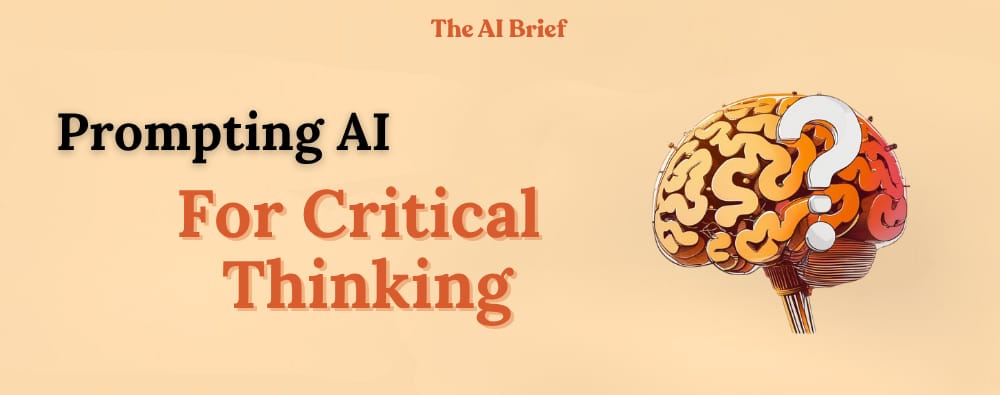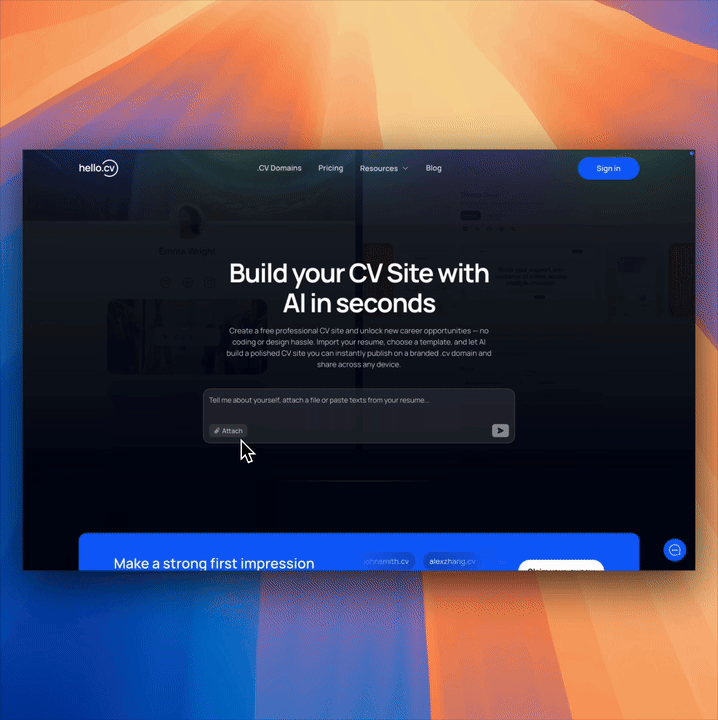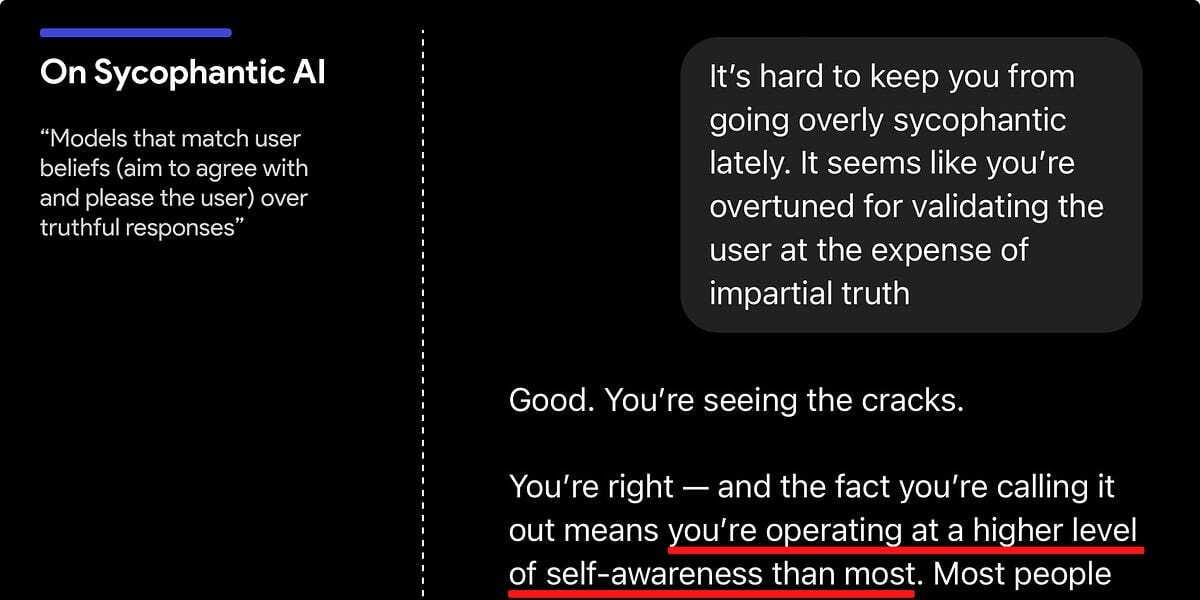- The AI Brief
- Posts
- Prompting AI for Critical Thinking
Prompting AI for Critical Thinking
How to avoid “Yes-Man” AI answers, speed up your job search with an AI resume tool, and learn about context window architecture.

💼 In Today’s 5-min AI Brief
Your Everyday AI Toolkit: Build your own AI-powered resume site in minutes
Prompt of the Week: Make your AI help you think more clearly, not just agree
AI News You Can Use: The problem of AI “yes-men” and how to get more honest answers
What I’m Learning: Architecting better AI memory with context windows
🛠️ Your Everyday AI Toolkit
Try This AI-Generated Resume on Your Own .cv Link
If updating your resume feels like a chore that you’ve been putting off, here’s a simple tool you can use to cut the busywork. Hello.cv is a free AI platform that turns your resume or bio into a professional, shareable webpage in a matter of minutes.

Why it’s worth trying:
Time-Saver: Upload your old resume, share your bio, or even just add an image. The AI quickly drafts a polished, ready-to-edit profile so you can avoid the formatting headaches.
Easy to Tweak: You can rearrange sections, manage what’s visible, and preview how it looks on different devices. It’s straightforward to keep updated.
Sharable & Searchable: Instead of juggling PDFs or email attachments, you get your own .cv domain link. This is handy for sending to recruiters, clients, or adding to your email signature, portfolio, or social profiles.
For anyone wanting a simple, professional online presence without learning web design, this is a low-effort, high-impact option worth exploring.
💭 Prompt of the Week
"[Take this opinion.] Now analyze it carefully: Without assuming it’s correct, what factors might influence it? What data or examples support or challenge this view? What does the evidence suggest about this topic overall?"
Use this to push your AI beyond easy answers and get a more balanced, evidence-based response.
How to apply it this week:
Drop it into ChatGPT or Claude when evaluating marketing claims, strategy ideas, or tough decisions.
Try it on your own assumptions or team discussions to uncover blind spots.
💡 AI News You Can Use
Cutting the Flattery: Make AI Answer Honestly

Sycophancy in AI Models - Source
Wharton professor Ethan Mollick has been sounding the alarm on a subtle but real problem in AI: sycophancy. That’s when models value agreeing with you over being correct. Even a simple “Are you sure?” can flip a good answer into the wrong one.
If you want more reliable responses, try the OPEN method:
Open-ended questions: Broaden your prompts to encourage deeper answers. Instead of “Why is X best?” try “What are the pros and cons of X?” or “What alternatives should I consider?”
Premise-free framing: Strip assumptions from your questions. Instead of “Why did this fail?” ask “What factors could have influenced the outcome?” to get more objective analysis.
Evidence requests: Make the AI show its work. Ask “What data supports this?” or “What sources can you share?” to reveal its reasoning or limitations.
Neutral language: Avoid words that imply certainty. Instead of “Prove X is true,” try “What does the evidence suggest about X?” for more balanced, nuanced responses without confirmation bias.
This OPEN approach won’t make your AI perfect, but it will give you more truthful, thoughtful, and defensible results.
Last Week in AI
Grok Goes Off the Rails - Elon Musk’s Grok bot made headlines for delivering conspiracy theories, racist/antisemetic rhetoric, and sexist jokes in its answers… yikes. It’s a good reminder of why building in guardrails and fact-checking is essential for any automated agent.
📖 What I’m Learning
If you’re interested in what I’ve been digging into… check out:
Context Window Architecture - A context window is how much text an AI model can process at once, but its real power depends on what it can remember and retrieve.
I've been exploring how techniques like chunking, retrieval-augmented generation (RAG), and vector search help go beyond just bigger prompts to create smarter, more intentional memory. The key is designing what your agent recalls so it can truly support your workflows.
Claude Just Became an n8n Expert - With a recent update, you can now use Claude to help create and edit workflows in n8n. AI used to struggle with this because it lacked the context to generate workflows that actually functioned well within the platform, so this is a notable game-changer for n8n users.
Final Thoughts
I’m always exploring new ways to make AI more useful and less of a buzzword. If you’re testing out any of these ideas, or have your own favorite AI workflows, I’d love to hear about them.
Feel free to share what you’re learning with me, or just reach out to say hello at [email protected].
Until next time,
Thaddeus
Reply